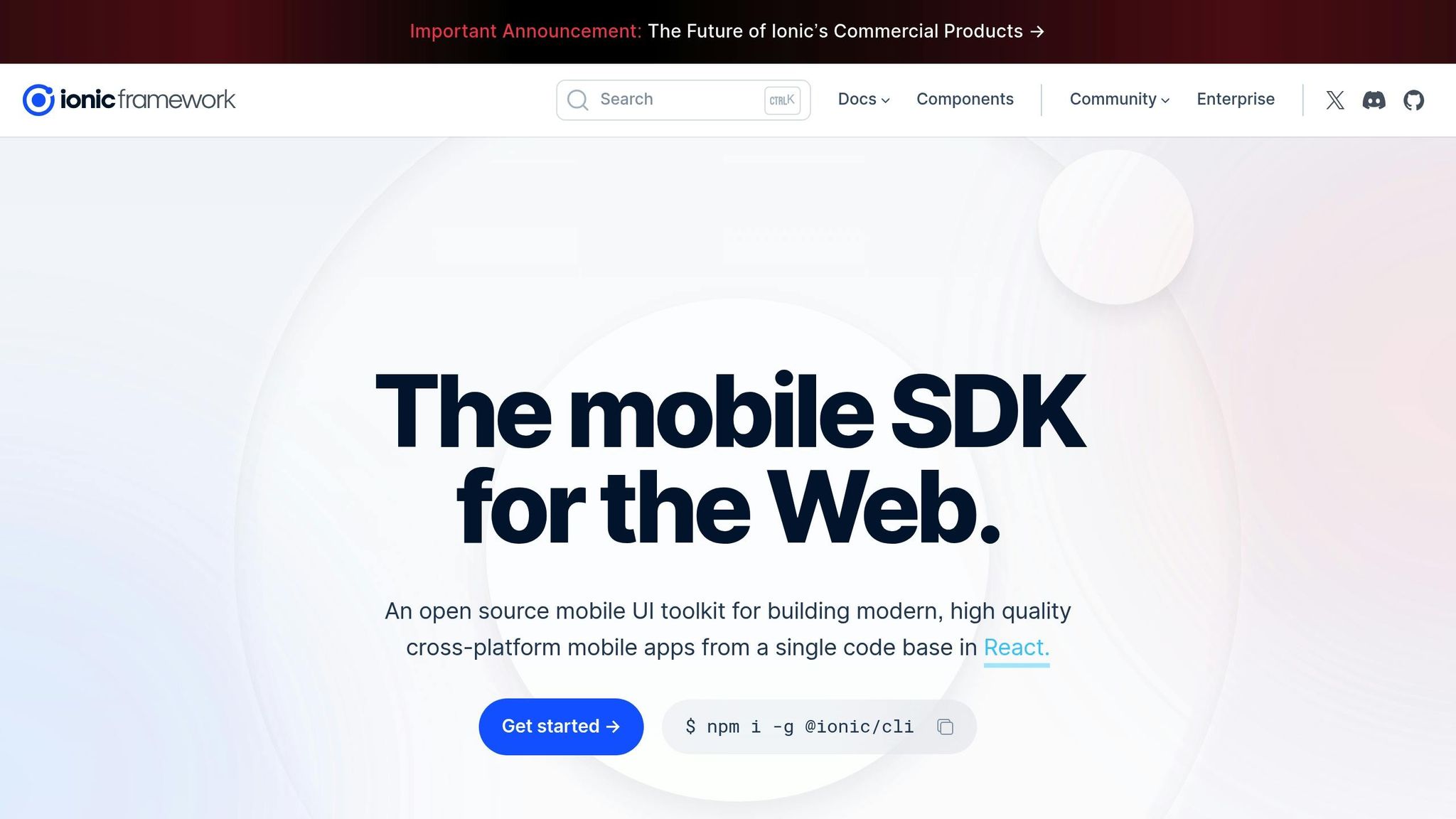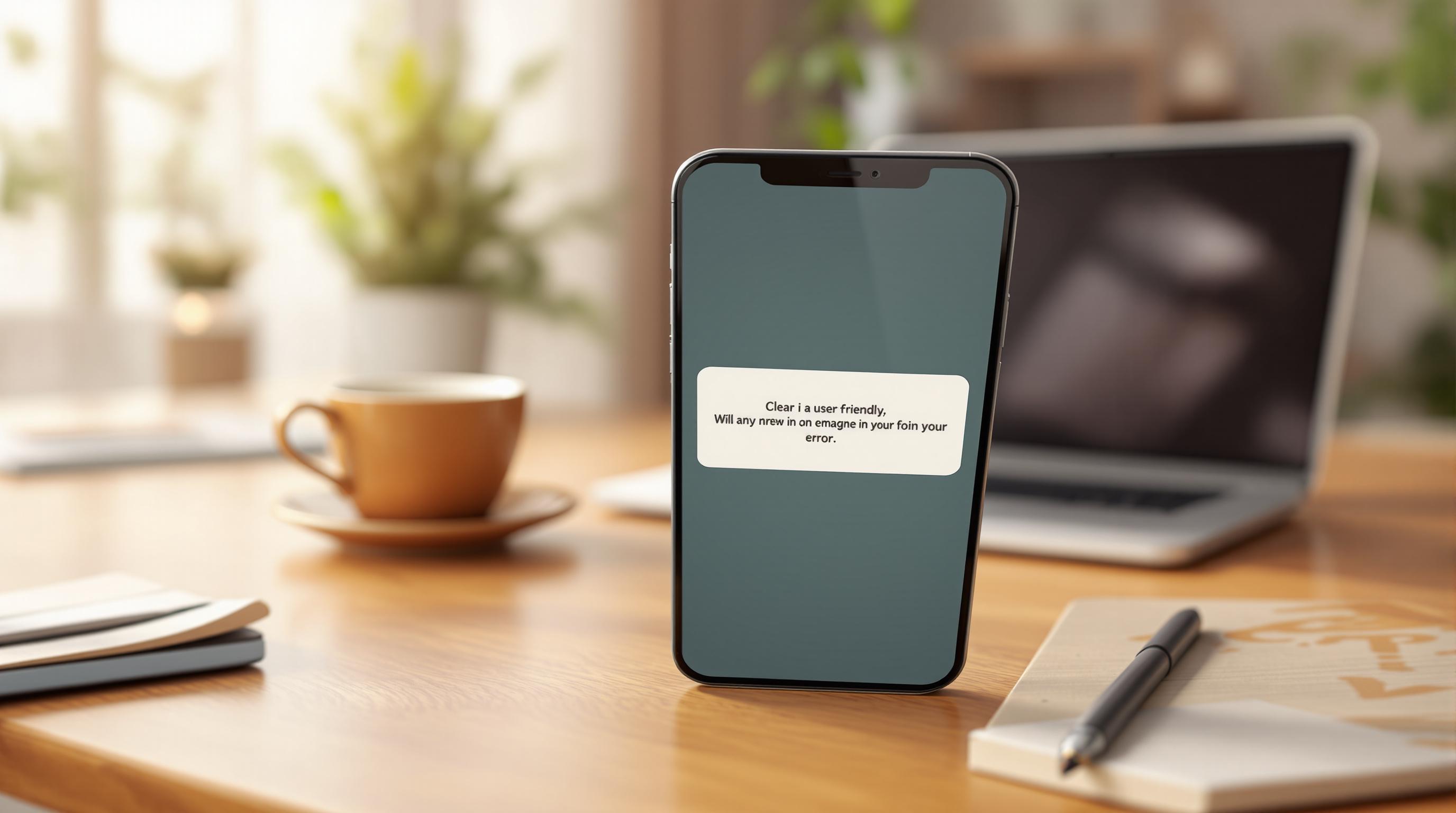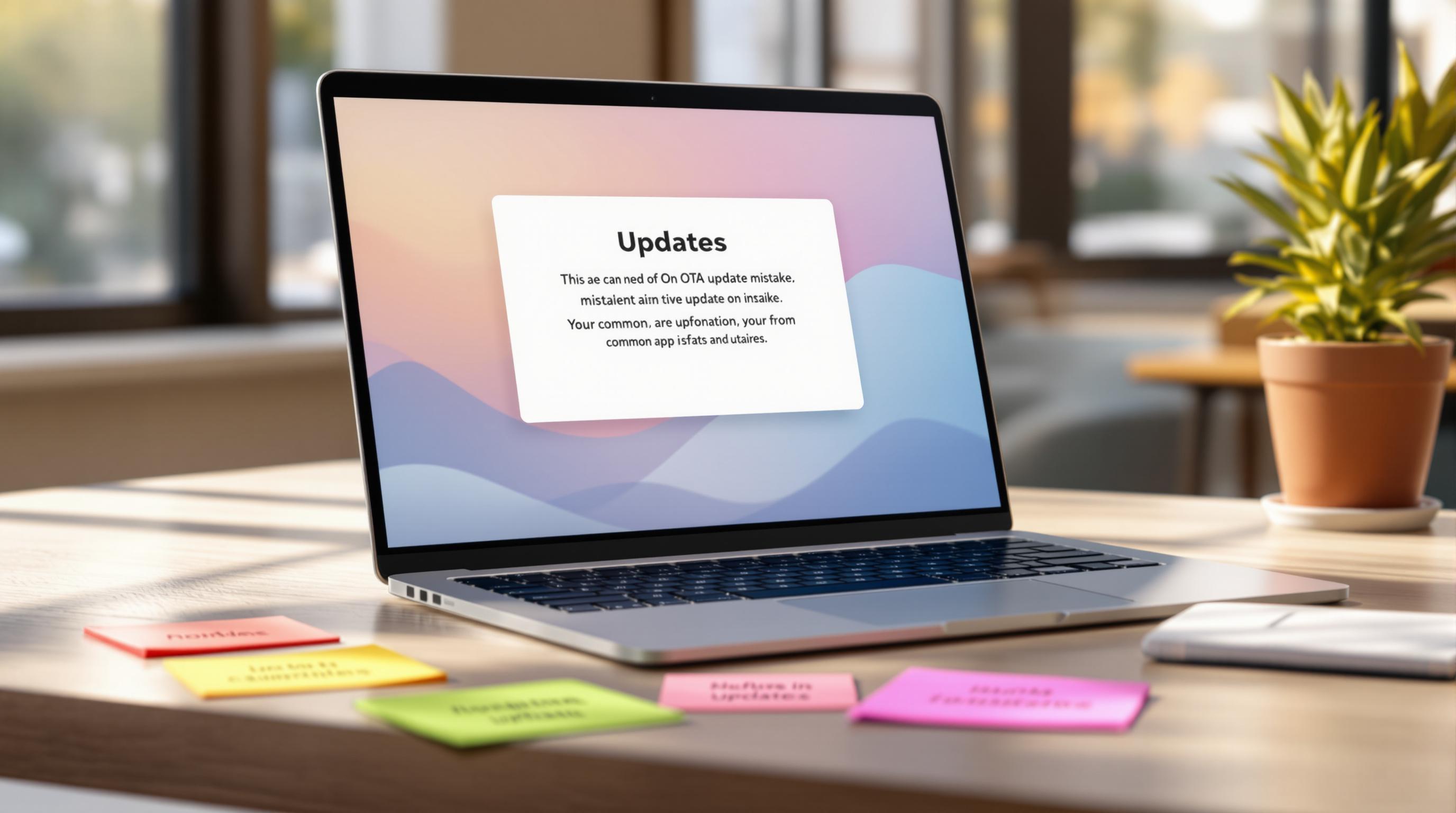Error handling can make or break your app’s user experience. Poor error management can lead to frustrated users and negative reviews, while effective error handling builds trust and keeps users satisfied. Here’s what you need to know:
- Quick Fixes Are Essential: Tools like Capgo enable 95% of users to receive bug fixes within 24 hours, ensuring minimal disruption.
- Clear Error Messages Matter: Always provide context, cause, and solution in error messages. For example: “Unable to save photo – File size exceeds 5 MB. Try compressing the image.”
- Proactive Prevention: Use input validation, monitor network status, and support offline functionality to minimize errors before they happen.
- Platform-Specific Solutions: Address unique challenges for iOS, Android, and web platforms while maintaining a unified error-handling strategy.
- Leverage Tools: Use systems like Sentry for error tracking and Capgo for over-the-air (OTA) updates to fix issues fast.
Takeaway: Fast fixes, clear communication, and consistent cross-platform error handling are the keys to keeping users happy and apps running smoothly.
Ionic Error Logging with Sentry using Capacitor

Core Error Handling Guidelines
Effective error handling in Capacitor apps requires balancing user experience with technical functionality. These guidelines help manage errors across platforms efficiently.
Writing Clear Error Messages
Good error messages should include three essential elements:
| Element | Description | Example |
|---|---|---|
| Context | Specify where the error happened | ”Unable to save profile photo” |
| Cause | Explain why the error occurred | ”Photo size exceeds 5 MB limit” |
| Solution | Offer actionable next steps | ”Please choose a smaller image or compress the current one” |
Use plain, understandable language while being technically accurate. For instance, instead of saying “HTTP 404 – Resource Not Found”, try “We couldn’t find the page. Check the URL or return home.”
Platform-Wide Error Standards
Ensuring consistent error handling across platforms involves a cohesive strategy:
- Centralized Error Catalog: Maintain a single repository for all error messages and codes to ensure consistency.
- Platform-Specific Handlers: Use native error handling tools while keeping the messaging uniform.
- Error Severity Levels: Classify errors by their impact and the actions users need to take.
Error Prevention Methods
1. Input Validation
Validate user inputs with real-time checks, ensuring proper data types and formats (e.g., email addresses or phone numbers).
2. Network Status Monitoring
Track network connectivity to prevent API errors. When offline, you can:
- Cache important data for offline use.
- Queue user actions for later processing.
- Display clear indicators for connectivity status.
3. Graceful Degradation
Support graceful degradation by:
- Falling back to local storage during cloud sync issues.
- Offering offline modes for critical tasks.
- Providing alternative ways to complete actions when full functionality isn’t available.
Following these steps helps create a reliable, user-friendly app experience while handling errors consistently across platforms. Proactive measures like these ensure smoother functioning and build user trust.
Handling Different Error Types
Form and Input Validation
Using a layered approach to input validation can improve user interactions while reducing errors. Provide clear, immediate feedback to users as they interact with the form:
| Validation Type | Implementation | User Feedback |
|---|---|---|
| Required Fields | Check input as the user types | Highlight with a red asterisk and inline error message |
| Format Validation | Use regex patterns | Display examples of valid formats |
| Cross-field Validation | Check related fields together | Highlight both fields if they conflict |
| Custom Rules | Apply business logic checks | Provide a clear explanation of any special requirements |
To make the process smoother:
- Display format guidelines before users start typing.
- Validate inputs progressively as they are entered.
- Conduct a final validation when the form is submitted.
While these measures address input-level mistakes, managing network and API errors is equally critical for maintaining a smooth user experience.
Connection and API Issues
Network and API errors can disrupt user interactions, so it’s essential to monitor connections and handle API responses effectively:
-
Network Status Monitoring
Keep track of connectivity to enable offline caching, queue operations for later, and update the user interface with the current status. -
API Error Management
Error Code User-Facing Message Background Action 401/403 ”Please log in again to continue” Refresh authentication tokens 404 ”The requested information isn’t available” Clear invalid cache entries 429 ”Please try again in a few minutes” Use exponential backoff for retrying 500+ “We’re experiencing technical difficulties” Log error details for debugging purposes
By combining these strategies, you can minimize disruptions caused by connectivity issues and ensure users remain informed.
Platform-Specific Problems
Each platform comes with its own set of challenges, requiring tailored solutions to address unique issues effectively.
iOS-Specific Handling:
- Manage permissions, memory constraints, and keyboard interactions.
- Ensure smooth handling of system-specific behaviors.
Android-Specific Handling:
- Standardize back button navigation.
- Adjust for varying screen sizes and pixel densities.
- Handle fragment lifecycle complexities.
Web-Specific Handling:
- Resolve CORS issues using proper headers.
- Address browser compatibility concerns.
- Tackle challenges unique to Progressive Web Apps (PWAs).
Capgo provides tools to streamline fixes for these platform-specific challenges. Using its channel system, you can:
- Test updates on targeted user groups before a full rollout.
- Gradually release updates to monitor their impact.
- Quickly revert any problematic changes to minimize user disruptions.
Error Management Tools
Effective tools simplify error tracking, reporting, and resolution in modern Capacitor apps. These tools work hand-in-hand with established error-handling practices to maintain a smooth user experience across platforms.
Error Tracking Systems
Error tracking platforms provide detailed insights into app issues. For example, Sentry, trusted by millions of developers, offers in-depth error context, including device details, OS versions, app versions, and even the specific code commits causing issues.
| Feature | Details |
|---|---|
| Environment Data | Tracks device type, OS version, and app version |
| Error Context & Alerts | Pinpoints error-causing commits and integrates with Slack/Jira for team notifications |
| Release Tracking | Measures crash-free session percentages to monitor app performance |
“Sentry helps our team fix the most important issues in each release. We can track how a release is trending by percent of crash-free sessions. With this data, we can remediate issues that impact the most users and move on to building more features.”
- Byron Dover, Engineering Manager for IT at Riot Games [2]
In addition to detailed tracking, in-app reporting captures real-time user feedback.
In-App Error Reporting
User-friendly in-app error reporting collects contextual feedback while respecting user privacy. Platforms like Disney+ rely on comprehensive error reporting to maintain high service standards.
“Sentry’s high-quality tooling helps Disney+ maintain high-quality service to its tens of millions of global subscribers.” [2]
Key features to consider include:
- Automatic error detection and reporting
- User-initiated bug reports with relevant context
- Privacy-conscious data handling
- Organized error categorization for faster resolutions
For critical issues that need immediate attention, OTA updates can provide quick fixes directly to users.
Quick Updates with OTA
Capgo’s OTA system enables developers to roll out fixes and updates quickly and efficiently. With this platform, you can:
- Push instant fixes for urgent bugs
- Test updates on specific user groups before full deployment
- Monitor update performance in real-time
- Revert problematic updates instantly if needed
“We practice agile development and @Capgo is mission-critical in delivering continuously to our users!”
- Rodrigo Mantica [1]
“Think about our 150+ developers and multiply that by the number of issues we see across our services and clients - it’s insane the amount of developer time we’ve saved.” [2]
User Experience in Error Handling
Expanding on the basics of error handling, focusing on user experience is essential to ensure consistency across platforms. A user-first approach to error handling not only resolves problems but also communicates issues effectively, improving user satisfaction and retention.
Clear Error Instructions
Error messages should be straightforward and help users resolve issues quickly. Key elements include:
| Component | Purpose | Example Implementation |
|---|---|---|
| Error Context | Explain what happened | ”Unable to save photo - Storage full (2.1 GB used of 2 GB)“ |
| Actions | Provide step-by-step solutions | ”Delete unused items or upgrade storage plan” |
| Status Updates | Keep users informed on progress | ”Retrying connection… Attempt 2 of 3” |
Error Recovery Options
It’s important to offer multiple ways for users to recover from errors, catering to both technical and non-technical audiences:
-
Progressive Recovery
Automatically attempt fixes, starting with simple solutions and escalating to more complex ones if needed. Provide real-time updates to keep users informed of the progress. -
Manual Intervention
Offer tools for users to take control, such as:- Activating offline mode during network issues
- Backing up data locally
- Retrying actions manually with visible progress indicators
- Rolling back to previous versions if necessary
Platforms like Capgo support these features by managing updates efficiently, ensuring users can access stable versions while issues are being addressed.
Multi-Language Error Support
Localization is more than just translation. It involves tailoring error messages to fit linguistic and cultural contexts:
| Aspect | Best Practices | Benefit |
|---|---|---|
| Message Structure | Use placeholder tokens for dynamic content | Keeps messages consistent across languages |
| Cultural Context | Adapt messages to local preferences | Improves user understanding |
| Character Support | Ensure Unicode compliance for all error texts | Ensures proper display in all languages |
Accurate, culturally sensitive communication is key. Testing error messages in various regions using a channel-based system ensures they resonate with local users. Coupled with real-time tracking and quick updates, this approach guarantees a smooth and user-friendly experience worldwide.
Clear communication builds trust and enhances the overall quality of your application.
Conclusion
Successful error handling in Capacitor apps combines technical accuracy with a focus on user experience, leading to better app ratings and improved user satisfaction.
Developers have leveraged quick update deployments [1], boosting user trust and app reliability. For example, Capgo’s OTA updates allow developers to resolve errors swiftly, ensuring users receive fixes within minutes [1].
Changing market needs push the boundaries of error management. Here are key factors that contribute to success:
| Factor | Impact | Outcome |
|---|---|---|
| Quick Fix Deployment | 82% global update success rate [1] | Reduced exposure to bugs |
| Clear Error Messaging | Higher user retention | Fewer support inquiries |
| Consistent Multi-Platform Support | Better user experience | Easier maintenance |
These data points show how fast fixes, effective communication, and consistent cross-platform performance strengthen app stability.
As error-handling solutions grow more advanced, developers need to focus on reliable error tracking, transparent communication, and swift updates. This approach ensures high user satisfaction while minimizing disruptions caused by technical challenges.




